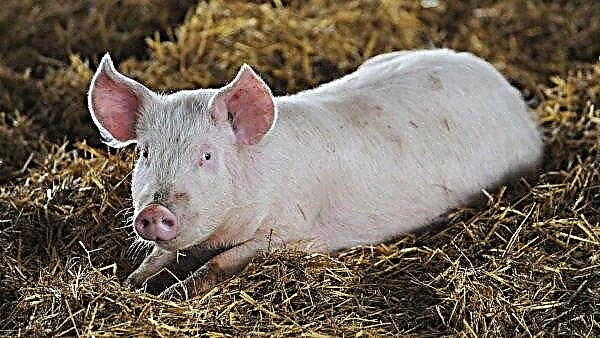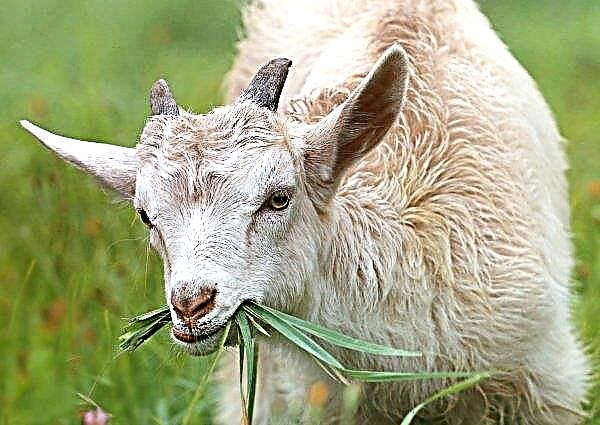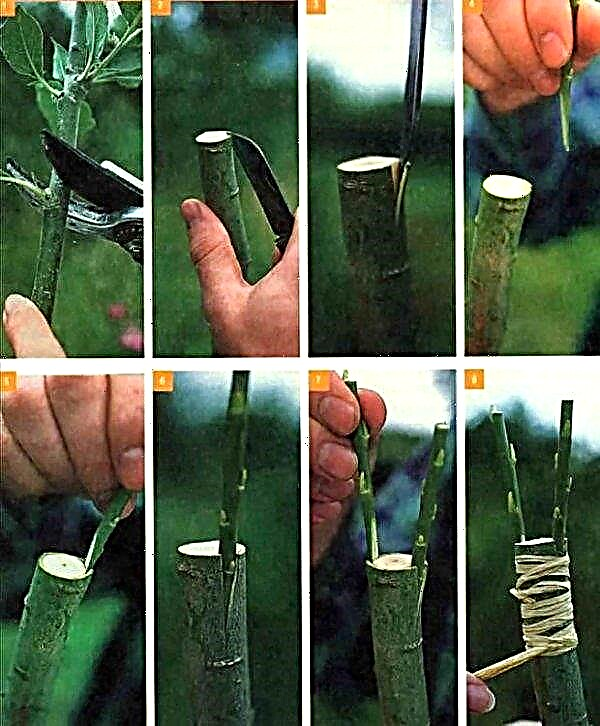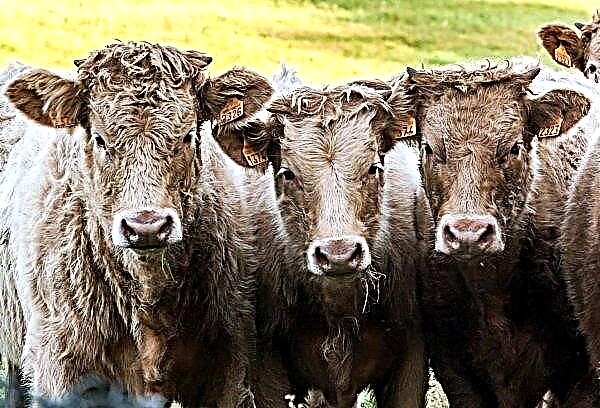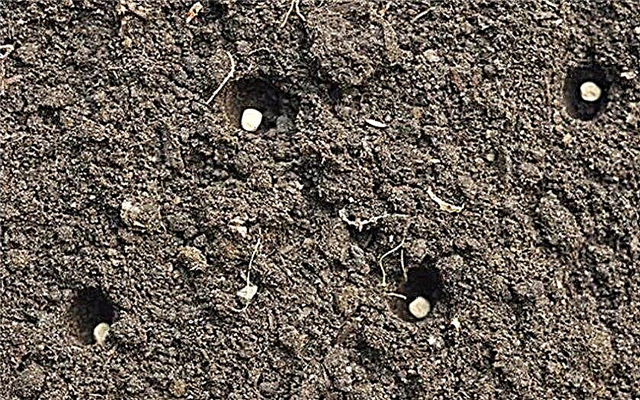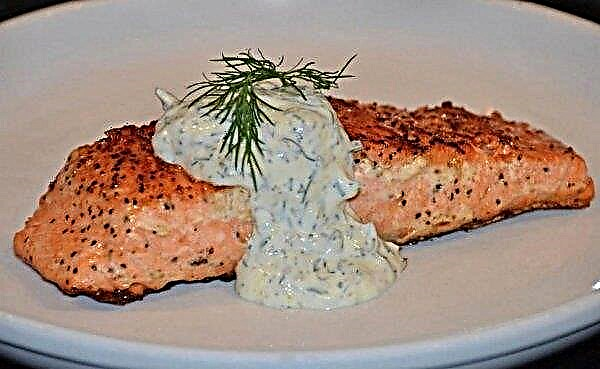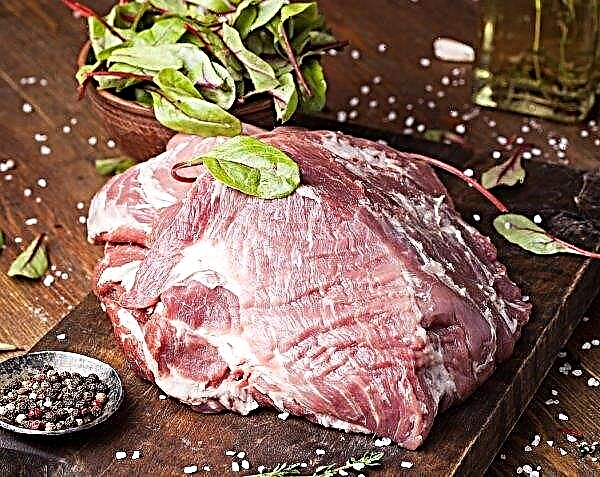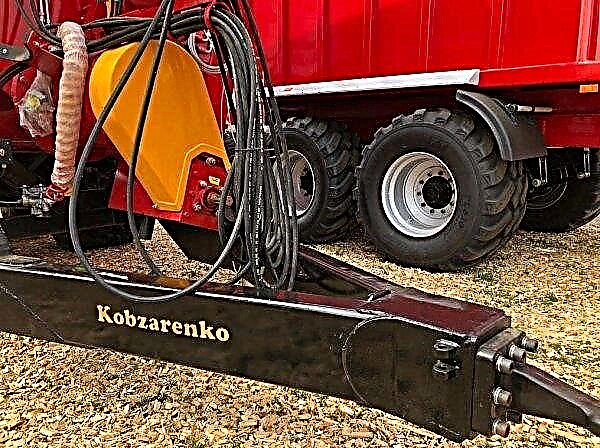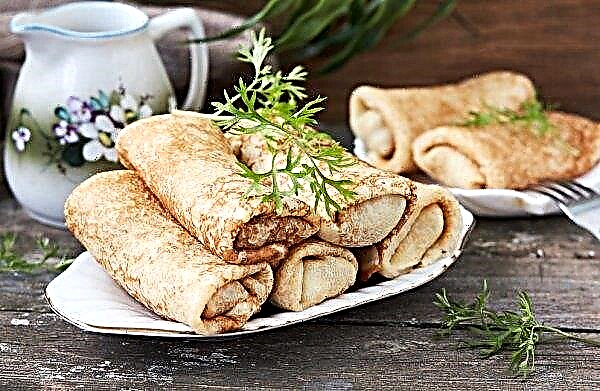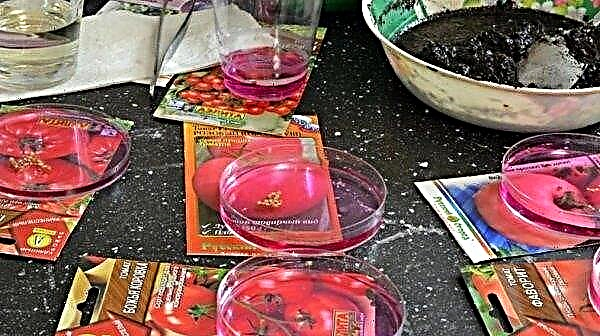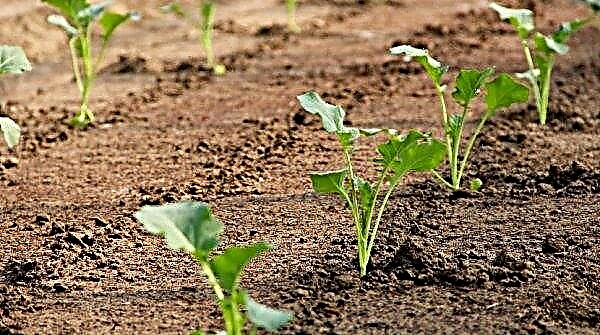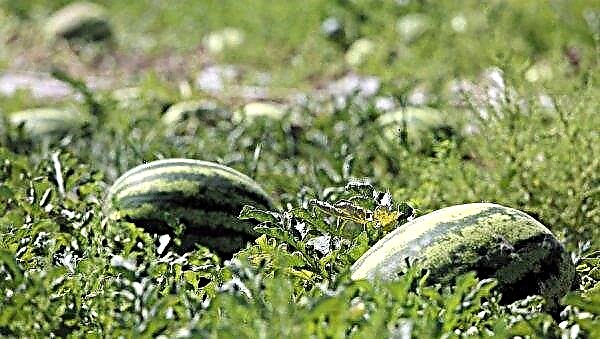The prickly spruce Super Blue is a large erect tree with a conical crown, characterized by an amazing blue color. She is very beautiful both in winter and in summer. You will find a detailed description of the variety, the characteristics of its planting and cultivation in the material.
Botanical grade description
Picea pungens Super Blue - representative of large, evergreen conifers. The adult spruce reaches a height of 15–20 m and a width of 7 m. Super Blue has a conical crown. Its branches are horizontal or slightly drooping. Their annual growth reaches 30 cm. Needles (2-3 cm) in the context of 4 angular, rigid, curved, pointed.
In young needles, the color will be from light blue to gray-blue, in older ones - blue-green. Fruits - cones 6-10 cm in size, elongated, light brown. At a young age they have a yellowish tint. The tree perfectly tolerates the urban atmosphere and is highly resistant to frost..

Landing
Spruce planting time depends on the climatic conditions of the region. Therefore, it is correct to focus on air temperature. If frost has passed in the spring and the air warmed up to +7 ... + 10 ° С - you can plant it. In summer, it is advisable to plant on a cloudy dry day at a temperature of no higher than + 22 ° C, as the tree will suffer from a lack of moisture. Autumn planting is also possible until soil frosts appear. It is important that they have at least 4-6 weeks left.
Also pay attention to the place where Super Blue will grow. Decorative firs are very dependent on the sun. The more light they receive, the brighter their blue tint. In the shade, they will be just dark green.
Did you know? One fir cone contains about 100 seeds.
Spruce planting can be carried out in rows, in order to form a windproof screen or decorate the alley in the square. They look equally good in single and group landings. No less popular blue spruce when grown in front of buildings. In winter they are decorated for the New Year.
The soil should be moist and well-drained. Spruce is tolerant to slightly acidic soil and can be grouped with any plants that like acidic soil. But worry about acidity is not worth it. On neutral or alkaline soils, it grows equally well.. Mandatory is only the requirement for drainage.
Video: How to plant a coniferous plant
Seedling Selection
Most seedlings are delivered from the nursery in a container. This is important, as the root system of the spruce is fibrous, consisting of many roots. They may be damaged during transportation. In addition, during growth in the soil fungi develop, mycorrhiza, necessary for the proper development of the seedling. During transportation, they must be preserved.
Important! Spruce, like the Christmas tree, does not tolerate heat. It cannot be planted in a very hot area, for example, on the south side of the building. Choose one where the sun is morning or evening, but not at noon.
The main characteristics of a good seedling:
- Trunk - straight.
- Branches or tops should not be broken.
- Needles color - blue corresponding to that indicated in the variety description. If it is just dark green, then this is not scary. Most likely the plant was in the shade.
If the needles turn yellow or become brown, then these are signs of illness and wilting, you should not buy such a plant. If the soil in the container is dry - the plant needs to be well watered before transplanting.

Site preparation
Inspect the site. The selected location should be sufficient so that other plants or communication systems do not interfere with an adult tree with a height of up to 20 m. Soil preparation will consist of digging the site.
Step-by-step instruction
For landing you will need:
- shovel;
- bucket;
- wet peat or burlap;
- Garden shears with sterile cutting edges.
Important! If the spruce after a transplant has thrown off part of the needles, then this is not a disease. Just a seedling from the nursery arrived with dried roots. Water 2-3 times a week for a month and spruce will restore needles.
Landing step by step:
- Choose a cloudy, not hot day.
- Inspect the seedling and water if necessary. If he arrived from the nursery with roots in polyethylene, then put him overnight in a bucket of water and a growth stimulator. Use Cornevin or another similar drug. Its task is to strengthen the formation of roots. You will need 10 g of the product per 10 liters of water. Diving time - from 2 to 6 hours. Depends on the condition of the seedling.
- Dig a hole. The size should be 2 times the height of the root ball and 2.5 times its width.
- The soil removed from it must be mixed with organic fertilizers. For example, compost.
- Lay a drainage layer on the bottom. It can be pebbles or broken brick. Layer thickness - at least 20 cm.
- Pour the prepared cone-shaped soil mixture over the drainage.
- Set a seedling on it and straighten the roots. They should lie evenly on his sides.
- Fill up to half with soil.
- Now water abundantly.
- Add soil.
- From the remaining soil mix, form a low mound around the root zone. This will simplify watering the plant.
- Cover the area with mulch. It can be sawdust, wood chips or any other organics.
- Now drive 2 sticks on both sides of the spruce into the ground. Tie a rope to them so that the tree is supported on both sides. If you need support. But it should be made so that the seedling does not break in a strong wind. It will be possible to remove the mount in a year, when the tree takes root well.

Care
Super Blue grows great without the gardener's daily attention. She will need quite a bit of care:
- periodic watering;
- annual fertilizer application;
- prevention of diseases and pests.
Video: General tips for caring for conifers
Watering
Super Blue is hard to water. If the soil is heavy, the water will leave slowly and due to the fact that the roots are constantly wet, the tree will be affected by fungal diseases. The roots will begin to develop slowly and with a strong gust of wind, it will simply fall out of the soil.
Therefore, water no more than once a week. Place the hose in the root zone and pour a small stream of water for an hour. Spruce creates a deep root system and you need to supply water throughout its entire length. Water an adult tree more often than 1 time per month. The exception is periods of drought. Then the frequency is increased.

Regarding seasonality, do not start watering right after the snow falls. For some time the soil will be quite moist. Stop frequent watering at the end of August. The tree needs to adapt the root system to the onset of winter. The last plentiful irrigation is carried out in October before frosts.
Loosening and mulching
Mulch helps retain water in the soil and limits evaporation. It inhibits the growth of weeds that compete with spruce for water. You will need a 10-cm layer of mulch around the tree within a diameter of 1.2 m. A properly mulched tree does not need to be watered often and loosening the soil is also not required. In the fall, inspect the mulch and if the layer is crushed, add it to a thickness of 10 cm.
Did you know? In western Switzerland, Old Tiko spruce grows. She is 9550 years old and she is considered the oldest spruce in the world.
Winter preparations
Evergreens are never completely inactive. They slow down development, but still experience water and nutritional needs. Therefore, the preparation begins with abundant October watering. If the tree lacks moisture, its needles begin to dry and may partially fall.
Winter will be dangerous for young seedlings for many reasons. They can break under the mass of snow, etc. Therefore, for them, a cone-shaped crate is prepared, which is tightened with agrofibre.
 As for mature trees, they do not need to be so protected. But they may need a fence if there are a lot of rodents in your area that eat the bark
As for mature trees, they do not need to be so protected. But they may need a fence if there are a lot of rodents in your area that eat the bark
All trees receive the greatest amount of damage during thaws. When groundwater suddenly freezes, the resulting ice crystals push the roots out of the soil, causing them to burst. For a small tree, this is dangerous. Therefore, the mulch becomes an insulating layer. It keeps the temperature at a certain level and protects the roots from frost.
In addition to deep watering and mulch, the tree should be protected from the bright sun. Wind speed is higher in winter, because there are no many natural barriers. As a result, it dries the needles, and direct sunlight increases the rate of photosynthesis, and hence the need of the tree for water and nutrients. And this is another important argument in favor of creating shelter for young fir trees.
Important! When removing snow, do not throw it on a tree. Branches and needles in winter are more fragile and can break.
Pruning
In winter, sanitary pruning is mandatory, removing all dry, broken branches or those that overlap each other. The friction of the branches damages the bark and creates a gate for getting into the pathogenic microflora. Forming pruning is usually not carried out. The conical shape is supported by the growth habits of spruce.
For sanitary pruning you will need:
- gloves
- protective glasses;
- secateurs with long handles;
- garbage bag.

Step-by-step cropping instructions:
- Disinfect the tool before use. To do this, lower it into the cutting edges in boiling water for 30 seconds. This will destroy the bacteria.
- Wear protective clothing as the resin does not wash well.
- Set the pruning shears at a 45 degree angle. When cutting the branch, leave the corner plugs 3.5 cm each, this will allow the tree to heal faster.
- Trim dry and damaged shoots first.
- And then remove those that for any reason interfere.
Important! Never cut the top off the spruce. This can lead to her death.
Diseases, pests and their control
Usually, spruces rarely get sick. But if this happened, then the reasons may be:
- excessive watering;
- natural factors - viruses, pests.
Excessive watering contributes to rotting and the development of fungal infections. To avoid this, when planting, they provide for the laying of a drainage layer and irrigation is carried out only when the soil has dried out by 5 cm.

Problems faced by spruce and their solution:
| Description of the problem | Decision |
| The brown tips of the branches. | Lack of moisture. Need to water. |
| The needles have lost a blue tint. | This is characteristic of all fir trees that grow in the shade. |
| The needles turn yellow. | Nutrient deficiency. Fertilizer required. |
| The needles turn red or turn pink. | Fungal disease - shute. In autumn, yellow spots can appear on the needles. Treat the spruce with a solution of “Quadrice” or “Favlcon”. Repeat the procedure after 2 weeks. |
| On the branches there are islands of brown needles. | Shute brown. It is treated by spraying with "Quadrice". |
| Separate branches dry up. | The fungal disease is fusarium. Treat with Phytosporin or Bordeaux fluid. |
| In the spring, yellow bubbles appeared on the branches. Then the needles will turn yellow and fall. | This is rust. For treatment, spray with Bordeaux liquid 3 times with an interval of 15 days. |
| On the scales of the cones, brown bubbles form on the inside. | This is the rust of the cones. Perform the treatment with Fitosporin. |
| There are accumulations of dry needles. | This is an insect laid eggs. If you open such a cluster, then the caterpillars will be found inside. Treat the wood with a soapy solution of any concentration. |
| Black powder spraying on needles and sticky needles. | These are sooty fungi. They develop on aphid secretions. In this case, you also need to treat the tree with soapy water. |
| The presence of cobwebs. | Spider mite. The treatment consists in spraying the spruce with the insecticides Akarin, Appolo or another drug. |
Growing spruce on the plot is not at all difficult. It is enough to properly plant her and then you can give her a minimum of attention. On a sunny site, she will certainly be able to show her best decorative qualities.

